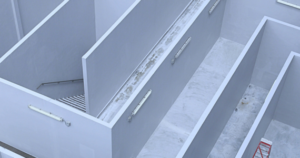Key takeaways
-
If you’re a first-home buyer, you can put a little extra money into your super and then access this money, as well as a set investment return, to put towards a home deposit
-
When you’re ready to buy, you can apply to withdraw a maximum of $30,000 ($60,000 for couples) from your super
-
You must meet the eligibility requirements to apply for the release of your money.
The First Home Super Saver (FHSS) scheme was introduced by the government in July 2017 to help Australians buy their first home.
One of its main advantages is it offers a tax-effective way to save for a deposit – you pay less tax when you save money in super compared to a savings account.
Another main benefit of the scheme is the Australian Taxation Office (ATO) calculates a set earnings rate on the amounts you contribute, regardless of how your super performs. So, it may offer less risk than investing in shares for example.
In this article we look at the FHSS scheme in more detail to help you decide whether it’s right for you.
How the FHSS works
If you’re a first-home buyer, you can put a little extra money into your super–up to $15,000 in each financial year–and then access this money, as well as a set investment return you make from it, to put towards a home deposit.
There are two ways you can go about this:
-
Make an agreement with your employer to contribute some of your salary into super (another term for this is salary sacrificing)
-
Make your own contribution into super from your savings or take-home pay. Because this money has already been taxed, you can claim it as a tax deduction in your tax return.
When you’re ready to buy, you can apply to withdraw a maximum of $30,000 ($60,000 for couples) from your super, plus the set earnings amount you make from your contributions, to put towards your home deposit. However, the Government intends to amend the law to increase this amount to $50,000 from 1 July 2022.
Tax saving benefit of the FHSS scheme
If you add more into super via salary sacrificing, that money is taxed at a rate of 15%. In most cases, this rate is a lot less that what you would be taxed if you held that money outside of super in a savings account.
For example, if you earn $60,000 a year and agree with your employer to sacrifice $15,000 of your income into super, you would be charged a tax rate of 15% ($2,250). This means when you decide to access this money, you’ll have a remaining amount of $12,750.
If you choose not to put your $15,000 into super, you could be taxed at a rate of 34.5% including 2% Medicare levy ($5,175). This means when you come to access that money, you’ll only have $9,825.
As illustrated above, if you’re being charged a high tax rate, the FHSS scheme may benefit you more.
How interest is calculated on your super contributions
In addition to the money you’ve added to super, you can also withdraw a set earnings amount.
Investment earnings on eligible contributions under the FHSS scheme are calculated on a deemed rate, which the government changes slightly each quarter. It’s currently at 3.01%1 per annum.
Hypothetically, if you added $10,000 into super and kept it in super for four years at an interest rate of 3%, your deemed earnings would be $1066.75, after the contributions tax is taken out ($188.25).
Considerations of the FHSS scheme
There are some important things to keep in mind if you choose to use the FHSS scheme. These include:
-
You must meet the eligibility requirements to apply for the release of your money including not previously having owned property or vacant land and using the property to live in, rather than as an investment
-
The timeframe for accessing your money can take up to five weeks, according to the ATO. They recommend you begin this process when you’re applying for a home loan
-
You can only apply to release your money once. If your release request is cancelled, you will not be able to apply again in the future
-
From the date you make your release request, you need to buy or build a home within 12 months
-
Your super fund will send the ATO your money. The ATO will then withdraw tax and pay you the remaining amount
-
The home you purchase or plan to build must be located in Australia.
If you’d like more information about the First Home Super Saver Scheme, call us on (07) 4041 6777
Source: MLC January 2022
1 Australian Government ATO: shortfall interest charge rates https://www.ato.gov.au/rates/shortfall-interest-charge-(sic)-rates/
Important information and disclaimer
This article has been prepared by NULIS Nominees (Australia) Limited ABN 80 008 515 633 AFSL 236465 (NULIS) as trustee of the MLC Super Fund ABN 70 732 426 024. NULIS is part of the group of companies comprising Insignia Financial Ltd ABN 49 100 103 722 and its related bodies corporate (‘Insignia Financial Group’). The information in this article is current as at January 2022 and may be subject to change. This information may constitute general advice. The information in this article is general in nature and does not take into account your personal objectives, financial situation or needs. You should consider obtaining independent advice before making any financial decisions based on this information. You should not rely on this article to determine your personal tax obligations. Please consult a registered tax agent for this purpose. Opinions constitute our judgement at the time of issue. The case study examples (if any) provided in this article have been included for illustrative purposes only and should not be relied upon for decision making. Subject to terms implied by law and which cannot be excluded, neither NULIS nor any member of the Insignia Financial Group accept responsibility for any loss or liability incurred by you in respect of any error, omission or misrepresentation in the information in this communication.



